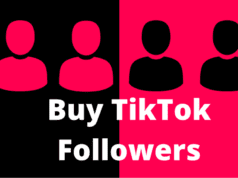
Most self-employed individuals and freelancers are well aware of traditional “outbound” marketing tactics. These tactics include marketing actions such as advertisements, flyers, cold-calling, buying leads, etc. The problem with this “traditional” route is that as information and user-reviews are more prevalent and easy to find, consumers have become more educated.
That means they don’t just take a company at its word. It has to be followed up with positive consumer experiences, quality information about the product or company and a sense of value beyond just a good product.
Consider these stats:
- 86% of people skip through television commercials and 44% of direct mail is never opened.
- However, companies that blog have 50% more website visitors than those that don’t – even if they only post something once a month.
This is where inbound marketing enters. The term was coined by HubSpot’s Brian Halligan and involves the concept of earning the attention and affinity of your customers by letting them find you. Typical inbound marketing actions include blogging, social media and search engine optimization.
rather than continuing to hunt in the jungle, I recommend setting up shop at the watering hole
“The best analogy I can come up with is that traditional marketers looking to garner interest from new potential customers are like lions hunting in the jungle for elephants,” wrote Brian Halligan, founder and CEO of HubSpot. “The elephants used to be in the jungle in the ’80s and ’90s when they learned their trade, but they don’t seem to be there anymore. They have all migrated to the watering holes on the savannah (the internet). So, rather than continuing to hunt in the jungle, I recommend setting up shop at the watering hole or turning your website into its own watering hole.”
The goal is to use content to establish credibility, draw more visitors to your website, make yourself more easily found and provide value to your customers. In this new era of marketing, it’s all about establishing a long-term relationship with your customers. Inbound marketing is at the forefront of this trend.
HOW INBOUND MARKETING WORKS
STEP ONE: Since inbound marketing is about people finding you, it all starts with analysis. Take time to research keywords for your industry. Look into whatever analytical reports you have access to. Study how people are responding to your current social media. If you aren’t online yet, look at what your competitors are doing for a general idea of what people want. Your goal here is to make sure that you have enough data to know what your target audience wants to find.
STEP TWO: Now that you are armed with data, logically most people would think you’d go straight to creating content. However, before you create the content that will attract potential customers, you need to know what you want them to do once they get to your site. Do you want them to download an ebook or fill out a form? Do you want them to sign up for your newsletter or purchase a product? Inbound marketing is best understood when you think of it as another way to work your sales funnel.
STEP THREE: Now that you know what action you want visitors to take on your website AND you know what information they are looking for, it’s time to start working on creating content. If you haven’t already, that means setting up your company blog and social media accounts. Once these are set up you need to establish a plan for producing content. Take some time to answer these questions:
- How often will you post?
- What topics will you cover each week?
- How will you produce the content?
- What types of content will you produce?
STEP FOUR: Getting the content up is only a small part of the process. Once people find your content, they are going to start engaging with your brand or company. That means you need to be monitoring activity and taking time out to talk with your customers. This is where you get to show that your company has “real” people behind it and that you do care about your customers.
STEP FIVE: Everything in business should be evaluated for a return on effort, and inbound marketing is no different. Take time out each week to really look through your stats to see what actions are getting the most responses and make plans to increase those efforts. At the same time, identify areas that aren’t producing results and either drop them off or try tactics to improve your results.
What are your thoughts about this new trend in marketing? Share your thoughts on the tips in this article or on inbound marketing in general in the comments section below!








